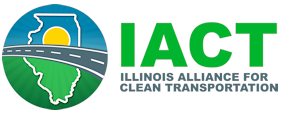With COVID-19 affecting almost all aspects of our daily lives this year, it’s undeniable that we’ve seen some changes. One major change that many predict is here to stay is the rise in online shopping. The research firm eMarketer stated in October that the year would bring a 32 percent increase in online shopping.
When it comes to shopping in general, there is one season that dwarfs the others: the holidays. This year, online holiday shopping rates are predicted to be even higher than usual, with some estimates showing as much as a 35 percent increase in online sales.
Besides the difference in acquiring the products themselves, there is one main difference the clean transportation community should be concerned about when it comes to comparing online versus brick and mortar shopping: the transportation emissions.
What is the net effect of e-commerce?
Dr. Monique Stinson, a researcher with Argonne National Laboratory, recently presented research on Moving Goods in a Smart Mobility System.
She brought up the central question “What is the net effect of e-commerce?” to which there is a complicated answer.
The simple answer is that online shopping with home delivery is more efficient than brick and mortar shopping when it comes to transportation – for now. The more complicated answer requires diving a bit deeper into the subject.
What makes online shopping more efficient?
According to Stinson’s research, the efficiency of online shopping is most apparent when one compares a household shopping trip to one added delivery stop.
One item bought online to be delivered adds an average of .4 miles of vehicle miles traveled. However, one item bought in store adds about eight miles of average vehicle miles traveled. Businesses and delivery services have an incentive to schedule their deliveries in a strategic manner that keeps costs, and by extension, emissions down, while individuals in passenger vehicles typically do not have the same priorities.
“Delivery providers have an economic incentive to make those trips as efficient as possible,” Stinson said. “They can plan a tour where they can make anywhere from 120 to 200 packages per tour.”
But that’s not always true, is it?
You are correct! Like I mentioned before, it’s a complicated answer. There is a caveat: if companies do not deliver efficiently, the above does not apply. For example, if a delivery company covers multiple trips over the same ground in one day, it may not be more efficient than a household shopping trip.
The above assertion that online shopping and home delivery is more efficient than brick and mortar shopping also assumes that the household shopping trip is going to be made across a long distance, in a gasoline vehicle, and that it is a dedicated shopping trip, meaning there are no other stops being chained into the same errand. That efficiency could change if multiple trips are made in one errand, or if the errand is done on foot, bicycle or in an alternative fuel vehicle, for example.
Another caveat: these findings were before COVID-19. Our habits have changed even more since then, with even more home deliveries happening.
It is important to remember, however, that although the average for one stop added is low, there is still an overall increase in vehicle miles traveled by medium- and heavy-duty vehicles (like delivery trucks) because of online shopping.
There are also other scenarios to take into account, like on-demand delivery that arrives within a few hours, and what those emissions and costs might be.
Who is involved with this process?
The answer to that question is, unsurprisingly, another somewhat complicated one. There are of course the retailers themselves. Then, there are the delivery providers. Of course, there are also the shoppers, too.
Interestingly, shoppers can be predicted by a few demographics. According to Stinson’s research, there is more e-commerce demand in households with higher income and more children. There is less e-commerce demand in households with more vehicles, fewer adults or places where people can walk to shop or are close to transit.
What can we do with this information?
To start, it is important to remember that this is only a beginning when it comes to research on the impacts of online shopping.
Aymeric Rousseau of Argonne notes that while this data can be useful to people on all stops of the online shopping and delivery process, it can’t necessarily change our behaviors.
“Our economies are market-driven,” Rousseau said. “If people want to order more goods online, they will. If they want to drive, they will. Our job is not telling them what to do, but finding the most efficient way to serve the demand.”
Stinson agreed. She also added that this kind of data could help fleet managers estimate energy consumption of trucks during their routes, or how to make the moving of goods even better in a “Smart mobility system.” Both noted that trucks and fleets are going to be increasingly important in the future as e-commerce increases.
If research shows that alternative fuel or electric vehicles can be efficient and drive a profit for a delivery service, perhaps there will be more technological development in and adoption of medium and heavy duty alt-fuel and electric vehicles.
The bottom line, when it comes to reflecting on the efficiency of different types of shopping, is that the answer is not black and white. While it may be more efficient to order online for now in terms of transportation, Stinson added that there are also packaging materials to take account of, and the emissions they may produce. There are also concerns about small businesses, as the COVID-19 crisis has made staying afloat more difficult.
With that in mind, online shopping is not necessarily the “one right answer,” but rather, is a question we must continue to ask ourselves as technologies develop.
By Linden O’Brien-Williams
Chicago Area Clean Cities



